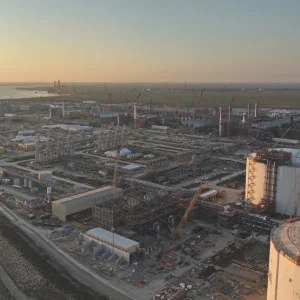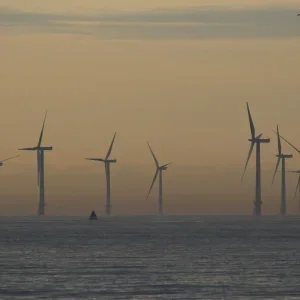The first drill hole (HD018) from the program intersected a new and very high grade graphite zone beneith existing mineralization (figure1). HD018 was drilled 1km east of the main graphite zone at Springdale (figure 2).
Results from this discovery hole include:
- 5.6 metres @ 7% Total Graphitic Carbon (TGC) from 15.5 metres,
- 2.6 metres @ 5.3% TGC from 33.3 metres,
- 4.6 Metres @ 15.8% TGC from 39.8 metres including 3.1 metres @ 21% TGC and
- 11 metres @ 25.6% TGC from 49.4 metres including 9 metres @ 30.2% TGC (new high grade zone).
HD018 was drilled to a greater depth following a review of HD015 core which indicated the potental of additional graphite mineralisation at the end of hole. The newly descovered high grade graphite mineralisation, has a shallow interpreted dip (less that 30 degrees). This combined with the multiple horizons located above this high grade zone, suggests the potential for a low strip ratio in any future mining operation.
The core trays cover the 9 metres @ 30.2% TGC (new discovered zone) demonstrates the consistency of this high grade graphite mineralisation.
Diamond core from HD018 is already undergoing metallurgical test work with several 10cm ¼ core sections being used to set up the base line test before moving on to the ½ core. The core is subjected to a technique called exfoliation, which suspends the core in a conductive chemical solution and then runs a charge through it to liberate graphene.
Visually the exfoliation test work is looking very exciting. The dark colour of the solution with bright flashes (like a shoal of fish) is believed to be a very positive observation for the production of graphene from exfoliation of graphite.
This exfoliation process utilised Springdale graphitic rock as it was extracted from the ground (in this case diamond core) with no crushing or grinding. The exfoliation method is used to peel graphene flakes from the graphite in the core. The graphene particles are then separated from the product produced by exfoliation using a series of additional steps.
It is very rare for a graphite deposit to be able to produce graphene using the exfoliation method. Graphene production is normally expensive to scale up, however the exfoliation method is believed to be a lower cost and scalable process.
HD018 was a vertical PQ diamond hole drilled at 6,246,160m N and 258,105m E to a depth of 66.2m.
The recently completed diamond drill program also tested the depth extension to hole HD016 which intersected 15.5 metres @ 7.5% TGC and 14 metres @ 6.6% TGC, representing approximately 30 metres of graphite mineralisation in one hole. HD016 was drilled in the previous diamond drill program at the Springdale Project (completed July 2017) to further test the extension of graphite mineralisation to the north. Shallow aircore reconnaissance drilling intersected graphite mineralisation, including 13 metres @ 10.9% TGC & 10.8 metres @ 7.6% TGC. Diamond drilling has confirmed significant thicknesses of graphitic material, assay results are pending and expected in the next few weeks.
Moving Forward
Comet plans to progress the assessment of the graphite and graphene at Springdale Project through the following work programs:
Detailed Aeromagnetic survey – A detailed aeromagnetic survey has been completed and is currently being interpreted. Interpretation of this survey will help define target graphite horizons in preparation for future drilling campaigns.
Metallurgical Testwork – Metallurgical testwork on samples generated in the recent diamond drill program has already commenced. This PQ core will allow for more detailed work on selected graphite zones. Understanding the amenability of the graphite at Springdale to convert to graphene or be used in battery and other technologies is an integral part of understanding and realising its commercial value.
Aircore/RC Drilling – An aircore / reverse circulation drill program is planned to commence in the last quarter of the calendar year. Comet has received funding approval from the Western Australian government for up to $100,000 to assist with this work.
Background
Comet’s Springdale project is located approximately 30 km east of Hopetoun, Western Australia. The tenements lie within the deformed southern margin of the Yilgarn Craton and constitute part of the Albany-Fraser Orogen. The tenement is over freehold land with sealed road access within 20km and is located approximately 150km from the port of Esperance.
Comet owns 100% of the three tenement’s E74/562, E74/583 and E74/612 that make up Springdale project. The total land holding at Springdale is approximately 220 square kilometres. Comet completed a successful first pass aircore drilling program in February 2016. This program confirmed that graphite was present in a prospective zone/horizon. Comet has now drilled 113 aircore holes for 2,901 metres and 20 diamond holes for 972 metres.
Comet discovered in April that graphene can be produced from Springdale graphite by electrical exfoliation. It is very rare for a graphite deposit to be able to produce graphene using the exfoliation method.






